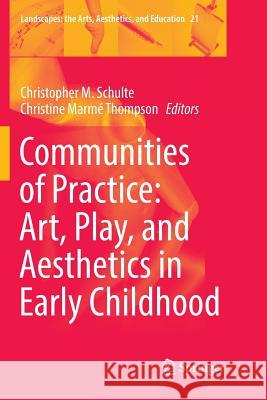Communities of Practice: Art, Play, and Aesthetics in Early Childhood » książka
topmenu
Communities of Practice: Art, Play, and Aesthetics in Early Childhood
ISBN-13: 9783319889726 / Angielski / Miękka / 2019 / 236 str.
Kategorie:
Kategorie BISAC:
Wydawca:
Springer
Seria wydawnicza:
Język:
Angielski
ISBN-13:
9783319889726
Rok wydania:
2019
Wydanie:
Softcover Repri
Ilość stron:
236
Waga:
0.35 kg
Wymiary:
23.39 x 15.6 x 1.32
Oprawa:
Miękka
Wolumenów:
01
Dodatkowe informacje:
Wydanie ilustrowane











